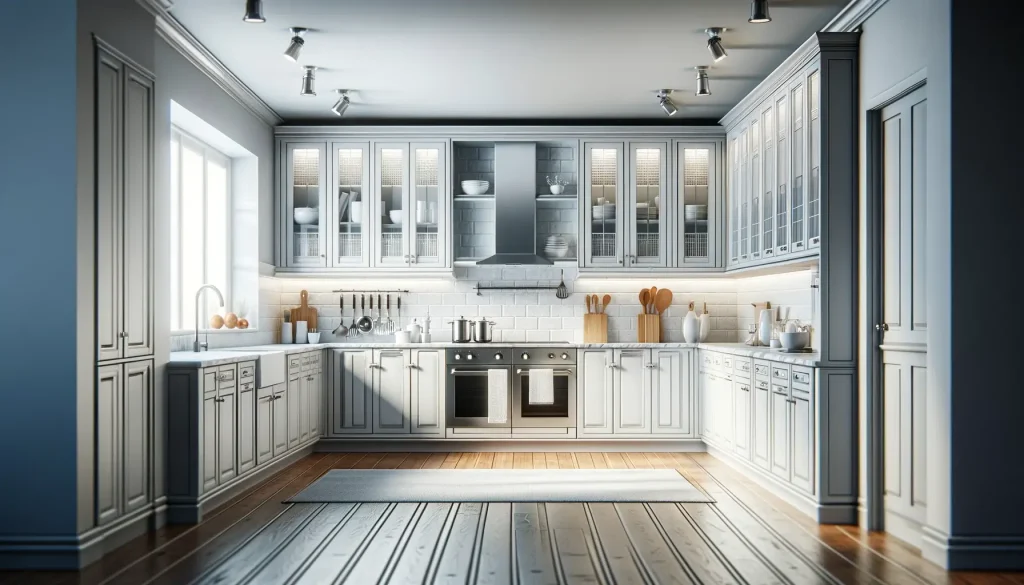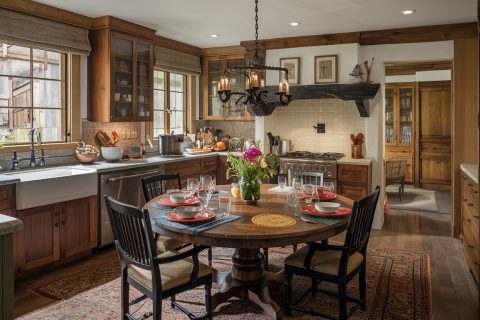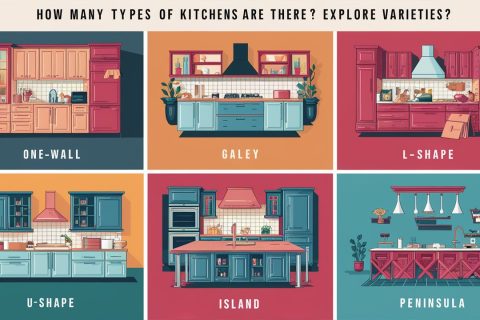Kitchen cabinets extending to the ceiling can maximize storage space and create a sleek look. This design choice, however, may not suit all kitchen sizes or ceiling heights.
Deciding on whether to let your kitchen cabinets reach all the way up to the ceiling involves several factors to consider. This decision can dramatically affect both the aesthetics and functionality of your kitchen.
Extending cabinets to the ceiling can eliminate dust buildup on top of the cabinets and give the illusion of a larger space, which can be especially beneficial in smaller kitchens.
On the other hand, higher cabinets might be harder to reach and could require a step ladder for accessing items. Your decision may also be influenced by the style of your home, with taller cabinets complementing a more contemporary or transitional design. Overall, the choice to extend kitchen cabinets to the ceiling should be based on personal needs, kitchen dimensions, and design preferences.
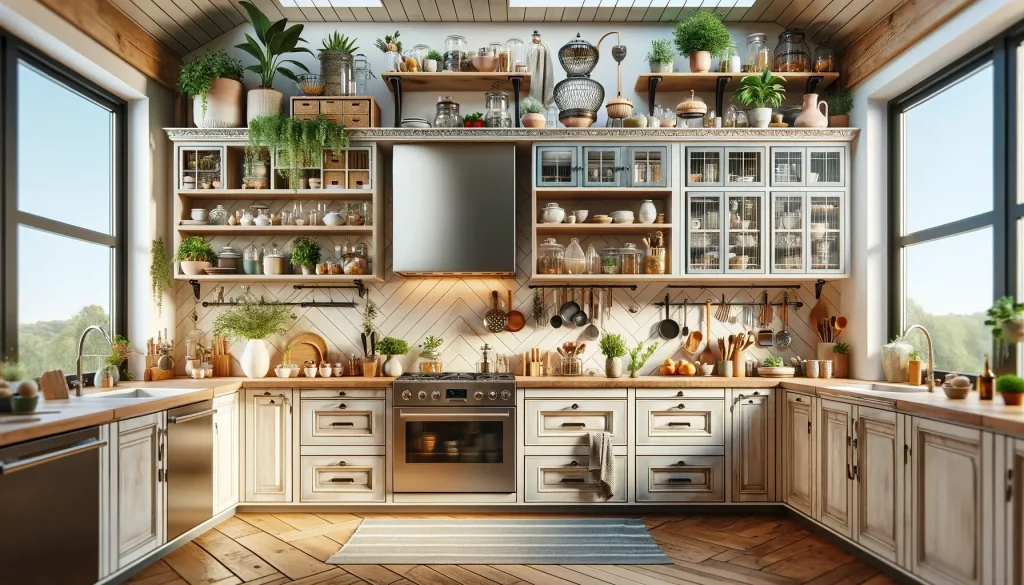
Rising To New Heights
Is your kitchen ready for a transformation? Ceiling-high cabinets are a bold choice. They extend upwards, touching the ceiling, and give your space an elegant touch. Let’s explore the beauty and benefits of kitchen cabinets that reach the sky.
Visual Appeal Of Ceiling-high Cabinets
Ceiling-high cabinets add a luxurious feel to any kitchen. They lead the eye upward, creating a cohesive look. Imagine your favorite dishes and glassware enclosed in stunning cabinetry that merges seamlessly with the ceiling. This seamless integration not only looks gorgeous but also eliminates dust buildup above. Here are some standout features:
- Sleek design
- No awkward gaps
- Maximizes vertical space
Illusion Of Extra Height In Your Kitchen
Extra height is a design illusion that many aim for. Ceiling-high cabinets are a perfect trick. The continuous line from floor to ceiling makes your kitchen look taller. Even in a smaller space, cabinets that reach the ceiling create a sense of expansiveness. Look at the difference it can make:
| Standard Cabinets | Ceiling-High Cabinets |
|---|---|
| Can make ceilings feel lower | Lifts the eye, enhancing perceived ceiling height |
| Spaces above can collect dust and clutter | Clean lines and no dust-traps |
| Often underutilized upper space | Maximizes storage |
Maximizing Storage Solutions
Maximizing storage space in your kitchen is crucial. Cabinets stretching to the ceiling effectively tackle clutter. This decision can transform your kitchen’s aesthetics and functionality. Let’s dive into the benefits and creative uses of top cabinet space.
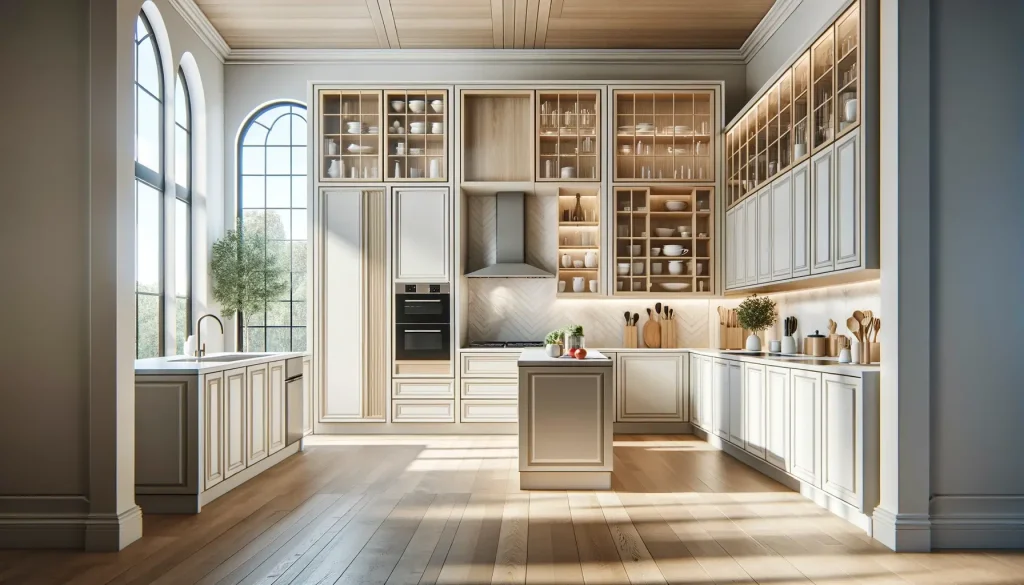
Pros Of Additional Shelving
Choosing to extend your kitchen cabinets upward offers several advantages:
- Increased storage space – Ideal for lesser-used items or bulk purchases.
- Reduced dust accumulation – No space above cabinets means less cleaning.
- Uniform aesthetic appeal – Cabinets to the ceiling provide a sleek, continuous look.
Creative Ways To Utilize Top Cabinet Space
Getting creative with top shelf usage maximizes its potential:
- Seasonal item storage – Store holiday dishes or decorations safely.
- Display space – Show off unique kitchenware or collectibles.
- Vertical dividers – Separate baking sheets and platters for easy access.
Design Considerations
Choosing the right height for kitchen cabinets is key. It affects style, space, and function in your kitchen. Before deciding if your cabinets should reach for the sky, consider a few critical points. Cabinet styles and the need to balance functionality with design are pivotal.
Cabinet Styles And Aesthetics
To make a statement or keep it cozy, cabinet style is crucial. High cabinets exude luxury and order, making spaces look taller. Yet, they must fit the kitchen’s overall theme. Here’s what to consider:
- Traditional: Intricate designs may look too heavy if extended.
- Modern: Sleek lines benefit from the unbroken flow to the ceiling.
- Eclectic: Mix-match styles can afford to stop short and play with open space.
Focus on the cabinet finish and the room’s color palette. Tall cabinets can blend in or stand out, based on your vision.
Balancing Functionality With Design
Form follows function in kitchen design. Tall cabinets mean more storage, but accessibility matters. Here’s what to weigh:
- Can you reach the top shelves easily?
- Do you need a ladder or a step stool?
- Is cleaning the top surfaces a concern?
Cabinets that do not touch the ceiling can create extra space for décor or keep items within easy reach. Consider pull-down shelves for the best of both worlds.
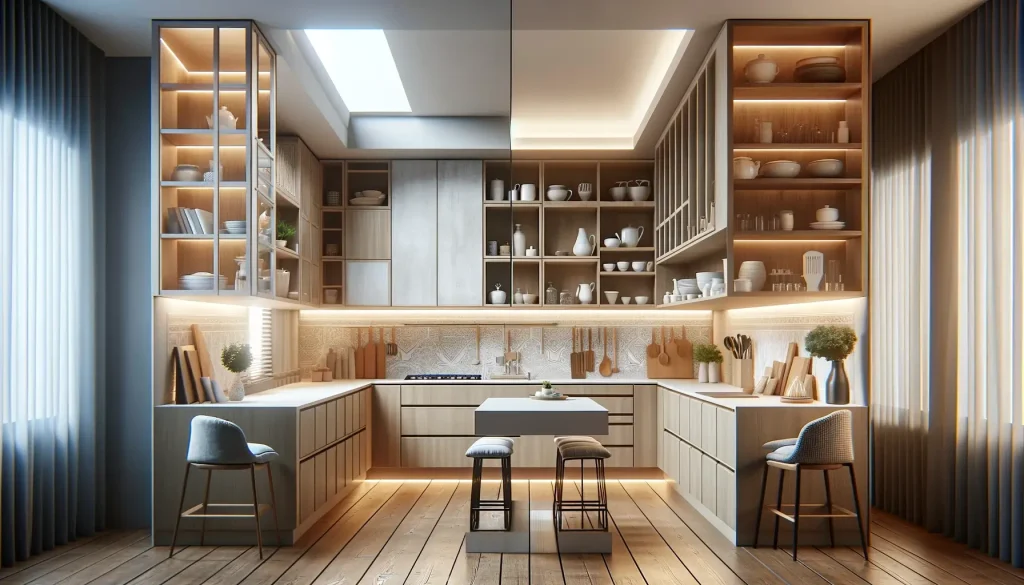
Construction Constraints
In the quest for a sleek, cohesive kitchen design, one question often surfaces:
Understanding the construction constraints is crucial before embarking on this design choice. Not all kitchens are ready for ceiling-reaching cabinets. Certain factors can guide this decision.
Assessing Kitchen Ceiling Height
Begin by measuring the kitchen’s ceiling height. Standard ceilings are about 8 feet high.
For homes with taller ceilings, such as 9 feet or more, cabinets that reach the ceiling can add grandeur and maximize storage. On the other hand, rooms with lower ceilings might not benefit as much from such tall cabinets as they can feel oppressive.
Limitations Due To Architecture
Certain architectural features can dictate your cabinet’s height. For instance:
- Beam placement might interfere with the installation.
- Soffits can limit cabinetry expansion.
- Uneven ceilings could make fitting cabinets to the ceiling challenging.
- Existing ductwork or plumbing may need rerouting, adding to the project’s cost.
A thorough inspection is necessary. An expert can determine if adjustments are possible or cost-prohibitive.
| Ceiling Height | Typical Cabinet Recommendation |
|---|---|
| Less than 8 feet | Gap or shorter cabinets recommended |
| 8 to 9 feet | Cabinets up to the ceiling possible |
| More than 9 feet | Cabinets to ceiling or decorative molding |
Before making a final decision, consult with a skilled contractor. They can offer valuable insights into what is feasible within your kitchen’s unique architecture.
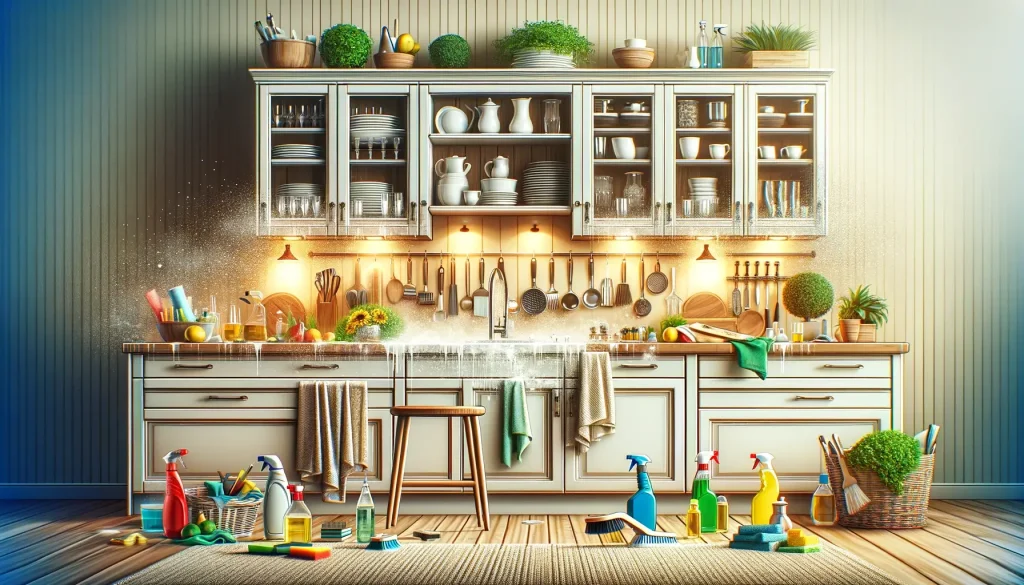
Cleaning And Maintenance
Cleaning and maintenance are key factors to consider for kitchen cabinets that extend to the ceiling. Proper care ensures longevity and aesthetic appeal. Let’s explore how extending your cabinets to the ceiling impacts the ease of cleaning and regular upkeep.
Ease Of Access To Higher Cabinets
Reaching the top shelves of ceiling-high cabinets can pose a challenge. To maintain these areas, you might need a step ladder. Here are some tips for accessing high cabinets:
- Store rarely used items on higher shelves.
- Use a sturdy and safe step stool or ladder for access.
- Install pull-down shelves for easier reach.
Keeping Dust And Grease At Bay
Cabinets that touch the ceiling leave no space for dust or grease to accumulate above. This eliminates the need for cleaning the hard-to-reach top surfaces. To keep your cabinets in pristine condition, follow these simple guidelines:
- Wipe cabinet surfaces regularly with a damp cloth.
- Use gentle cleaners to prevent damage to the cabinet finish.
- Periodically clean cabinet handles and pulls.
With these practices, maintaining your ceiling-high cabinets becomes manageable, supporting a clean and inviting kitchen environment.
Cost Implications
Making the choice to extend kitchen cabinets to the ceiling can impact your budget. It’s essential to weigh this decision against your financial plan and long-term goals for the space. Various factors influence the total cost, and understanding these will help you make an informed decision.
Budgeting For Taller Cabinetry
When considering taller cabinets, here’s what can affect your budget:
- Materials: Higher cabinets mean more materials.
- Labor: Installation may require specialized skills.
- Design: Custom designs can add to the expense.
Cost-effective tips for budgeting include:
- Comparing different material costs.
- Seeking quotes from multiple contractors.
- Considering stock cabinetry that can reach or mimic the look of ceiling-height cabinets.
Long-term Investment Value
Spending more on ceiling-height cabinets can bring long-term benefits:
| Benefit | Explanation |
|---|---|
| Aesthetics | Creates a sleek, modern look. |
| Space | Offers additional storage options. |
| Value | Can increase home resale value. |
Opting for taller cabinetry often results in a cleaner and more cohesive kitchen design. It can also reduce dust build-up and eliminate unused space.
Investing in quality cabinets may result in savings over time. High cabinets can minimize renovations as storage needs evolve.
Installation Challenges
Opting for kitchen cabinets that kiss the ceiling presents unique installation challenges. This choice marries elegance with complexity. The right approach streamlines the process, ensuring stunning results. Let us explore professional versus DIY strategies and grasp the intricacies of installing towering cabinets.
Professional Vs. Diy Approaches
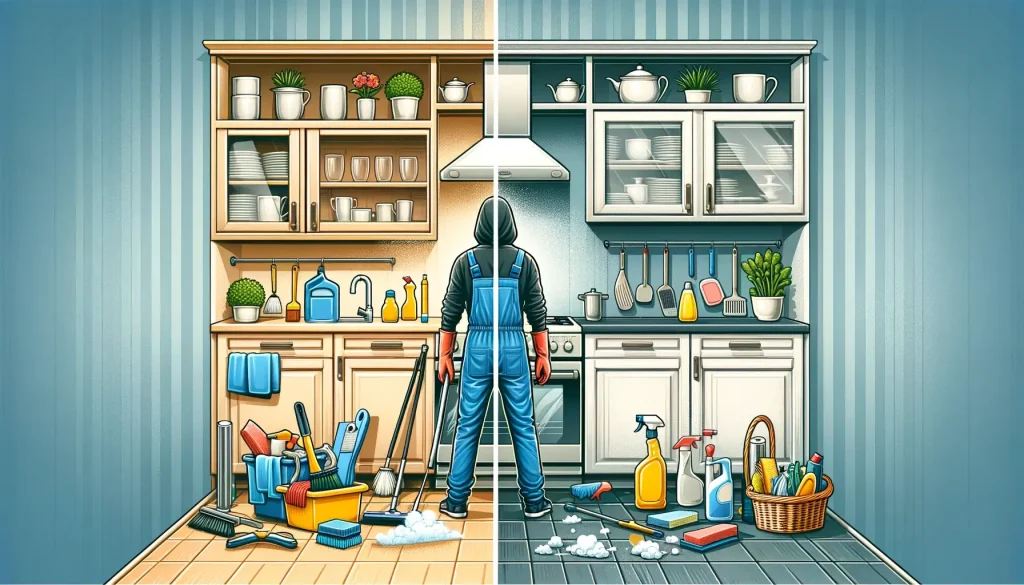
Professional installation guarantees expertise and speed. Specialists possess the necessary tools and knowledge. They overcome obstacles like uneven ceilings with finesse. Homeowners often save time and avoid potential errors with this choice.
DIY installation, in contrast, can be rewarding but daunting. Those with carpentry skills may embrace this challenge. Comprehensive planning and precision are critical. Yet, unexpected issues may still arise, complicating the task.
Navigating Installation Complexities
- Measurements must be precise; a single miscalculation can derail the project.
- Alignment with ceilings is crucial. Sloped or uneven surfaces complicate matters.
- Securing cabinets to the wall demands sturdy supports, especially for upper units.
- Customizations may be necessary to accommodate fixtures or appliances.
- Tools, such as levels, drills, and saws, are essential for accurate installation.
Alternatives To Consider
When deciding on kitchen cabinets, reaching for the ceiling isn’t the only choice. Explore below for creative alternatives that add style and function.
Mixing Cabinet Heights For Function
Varying cabinet heights can cater to different needs. Consider these factors:
- Ease of access – Lower cabinets put items within reach.
- Aesthetic appeal – Mixed heights break monotony, adding visual interest.
- Practical design – Tall cabinets store lesser-used items on top shelves.
Using Open Shelving Or Hanging Storage
Alternative storage solutions keep your kitchen organized and stylish:
| Open Shelving | Hanging Storage |
|---|---|
|
|
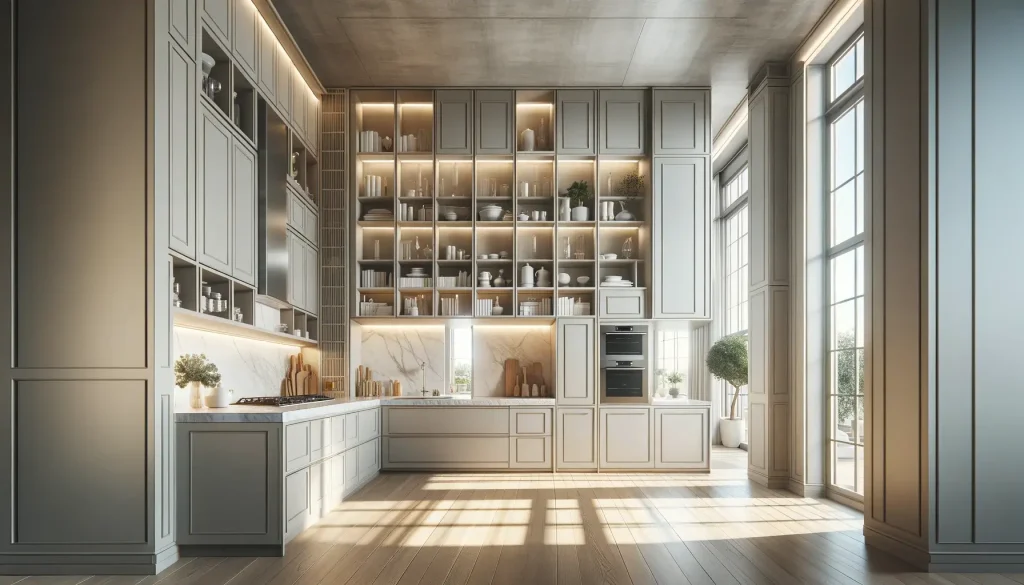
Conclusion
Deciding on whether kitchen cabinets should reach the ceiling involves practicality and aesthetics. Evaluate your space, needs, and design style before choosing. Ceiling-high cabinets offer storage and a sleek look, yet may not suit every kitchen. Remember, the choice is personal and impactful.
Create a kitchen that delights you every day.
FAQs About Should Kitchen Cabinets Go To Ceiling
What Are The Benefits Of Ceiling-high Cabinets?
Ceiling-high cabinets offer a sleek, seamless look and maximize storage space in a kitchen. They eliminate dust collection on top and can make smaller spaces appear larger.
How Do Ceiling-height Cabinets Affect Kitchen Design?
Ceiling-height cabinets draw the eye upward, creating an illusion of height and a more expansive feel in the kitchen. They also provide a sophisticated, custom-built appearance to the design.
Can Cabinets That Reach The Ceiling Save Costs?
While entirely reaching the ceiling may increase material costs upfront, full-height cabinets reduce the need for cleaning and can eliminate the expense of decorative molding or faux cabinets on top.
Are There Downsides To Tall Kitchen Cabinets?
Tall kitchen cabinets might make it difficult to reach items on the top shelves without a step stool. They can also make a room feel smaller if the ceiling is low.
More blogs like Kitchen Cabinets:
How to Remove Kitchen Cabinets?
How Long Does It Take to Install Kitchen Cabinets?
How Long Does It Take to Paint Kitchen Cabinets?
What Color Should I Paint My Kitchen Cabinets?
How to Make Oak Kitchen Cabinets Look Modern?
How to Separate Your Kitchen and Living Room?
How to Remove Paint from Kitchen Cabinets?

